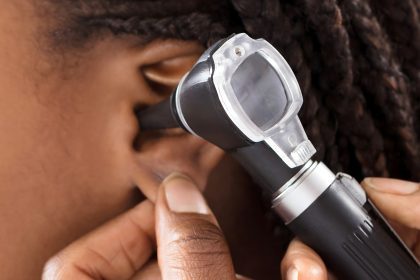Hearing loss can significantly impact daily life, but selecting the right hearing aid can make a world of difference. With numerous options available, choosing the right device might feel overwhelming. By understanding key selection criteria and reputable manufacturers, you can make an informed decision that enhances your quality of life.
1. Understand your hearing needs
Professional evaluation forms the cornerstone of selecting the right hearing aid. An audiologist will conduct comprehensive testing to assess your degree and type of hearing loss. This evaluation reveals whether you experience high-frequency or low-frequency hearing loss, which significantly influences device selection. Audiologists also consider your lifestyle requirements, helping determine if you need advanced features like noise reduction or directional microphones.
Your daily activities play a crucial role in this assessment. For instance, if you frequently attend social gatherings or work in noisy environments, you’ll need different features than someone who primarily stays in quieter settings. The audiologist will use this information to recommend devices that match your specific hearing patterns and lifestyle demands.
2. Choose the right design style
Hearing aids come in several distinct styles, each offering unique advantages. Behind-the-ear (BTE) models provide robust sound amplification and are easier to handle, making them ideal for severe hearing loss or users who want simple adjustments. While more noticeable than other options, they offer powerful performance and durability.
In-the-ear (ITE) devices fit discreetly in the outer ear and work well for moderate hearing loss. These devices strike a balance between visibility and functionality, incorporating useful features while remaining relatively inconspicuous. Completely-in-canal (CIC) options offer near invisibility but provide less power than larger models. The choice between these styles often depends on factors like degree of hearing loss, dexterity, and cosmetic preferences.
3. Evaluate technology features
Modern hearing aids incorporate sophisticated technology that transforms the user experience. Bluetooth connectivity enables direct streaming from smartphones and other devices, while directional microphones help focus on conversations in noisy environments. Rechargeable batteries eliminate the need for frequent battery changes, and tinnitus masking features provide relief for those experiencing ringing in their ears.
Advanced sound processing capabilities help differentiate speech from background noise, making conversations clearer in challenging environments. Many devices now offer smartphone app integration, allowing users to adjust settings discretely and save preferences for different listening environments. These technological features can significantly impact daily usability and satisfaction with the device.
4. Assess cost and warranty
Hearing aids represent a significant investment, with prices typically ranging from $1,000 to $6,000 or more per device. This variation reflects differences in technology levels, features, and brand reputation. Many manufacturers offer payment plans to make the investment more manageable, and some insurance plans provide partial coverage.
A comprehensive warranty proves equally important as the initial purchase price. Look for coverage that includes both repairs and replacements, as hearing aids may require periodic maintenance. Many manufacturers offer trial periods, allowing users to test devices in real-world conditions before making a final commitment. Understanding these financial aspects helps ensure your investment provides long-term value.
5. Look at customer reviews and support
A hearing aid requires ongoing support and service throughout its lifetime. Research manufacturer reputations and local service availability before making a purchase. Strong customer support networks provide peace of mind, ensuring help is available when needed. Consider factors like adjustment support, maintenance services, and the availability of local providers who can service your chosen brand.
5 recommended hearing aid brands
Phonak leads the industry with innovative technology and customizable options. Their devices excel in challenging listening environments and offer comprehensive Bluetooth streaming capabilities, making them particularly suitable for tech-savvy users who want seamless connectivity with their devices.
ReSound specializes in creating high-quality, discreet hearing aids that integrate perfectly with smartphones. Their Smart 3D app provides convenient adjustments, making them popular among users who value control and connectivity. The brand’s focus on natural sound processing helps users maintain awareness of their environment while improving speech clarity.
Starkey distinguishes itself through healthcare integration, offering unique features like fall detection and heart rate monitoring. These multifunctional devices appeal to users who want their hearing aids to do more than just amplify sound. Their commitment to innovation has made them a trusted choice for those seeking comprehensive health monitoring alongside hearing improvement.
Oticon emphasizes comfort and natural sound quality, with devices that excel at reducing background noise while maintaining speech clarity. Their focus on brain-first hearing technology helps users process sound more naturally, making them particularly effective in social settings where following conversations can be challenging.
Widex stands out for its excellent sound quality and effective tinnitus management solutions. Their eco-friendly approach includes rechargeable options that appeal to environmentally conscious users. The brand’s commitment to sound quality makes them especially popular among music lovers and those who demand premium audio performance.
Looking ahead
The journey to better hearing requires careful consideration of your specific needs, lifestyle, and preferences. By evaluating these five key factors and exploring options from reputable manufacturers, you can find a device that enhances your hearing experience and improves your quality of life. Remember that success with hearing aids often depends on proper fitting and ongoing support, making it essential to work with qualified professionals throughout the selection and adjustment process.
This story was created using AI technology.













